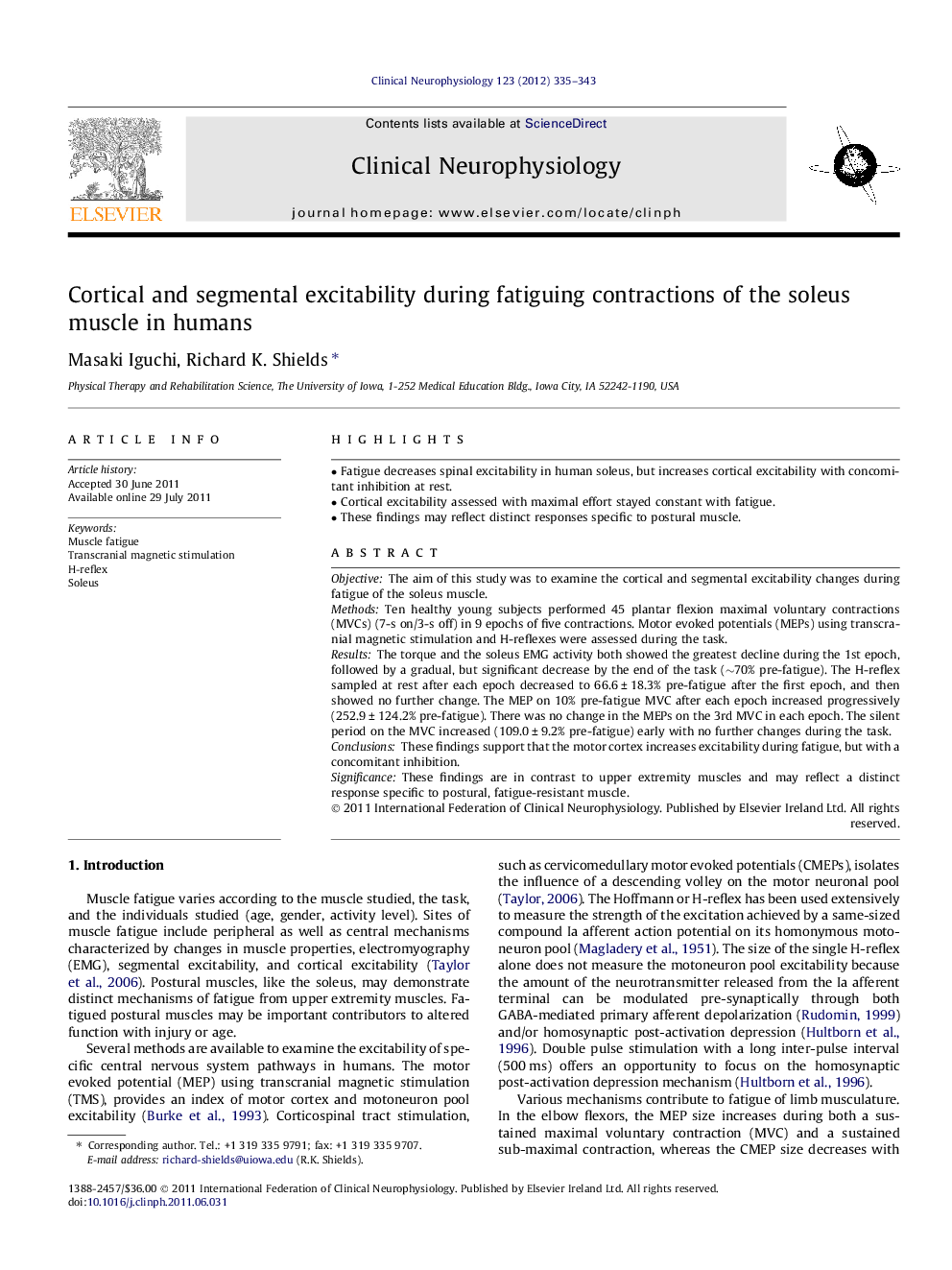| Article ID | Journal | Published Year | Pages | File Type |
|---|---|---|---|---|
| 3045632 | Clinical Neurophysiology | 2012 | 9 Pages |
ObjectiveThe aim of this study was to examine the cortical and segmental excitability changes during fatigue of the soleus muscle.MethodsTen healthy young subjects performed 45 plantar flexion maximal voluntary contractions (MVCs) (7-s on/3-s off) in 9 epochs of five contractions. Motor evoked potentials (MEPs) using transcranial magnetic stimulation and H-reflexes were assessed during the task.ResultsThe torque and the soleus EMG activity both showed the greatest decline during the 1st epoch, followed by a gradual, but significant decrease by the end of the task (∼70% pre-fatigue). The H-reflex sampled at rest after each epoch decreased to 66.6 ± 18.3% pre-fatigue after the first epoch, and then showed no further change. The MEP on 10% pre-fatigue MVC after each epoch increased progressively (252.9 ± 124.2% pre-fatigue). There was no change in the MEPs on the 3rd MVC in each epoch. The silent period on the MVC increased (109.0 ± 9.2% pre-fatigue) early with no further changes during the task.ConclusionsThese findings support that the motor cortex increases excitability during fatigue, but with a concomitant inhibition.SignificanceThese findings are in contrast to upper extremity muscles and may reflect a distinct response specific to postural, fatigue-resistant muscle.
► Fatigue decreases spinal excitability in human soleus, but increases cortical excitability with concomitant inhibition at rest. ► Cortical excitability assessed with maximal effort stayed constant with fatigue. ► These findings may reflect distinct responses specific to postural muscle.
